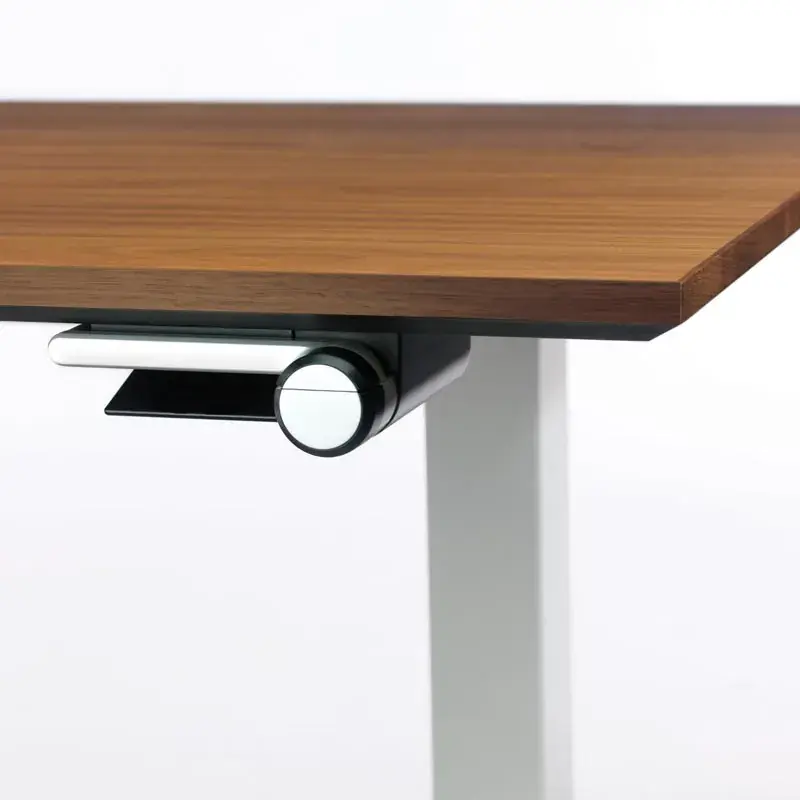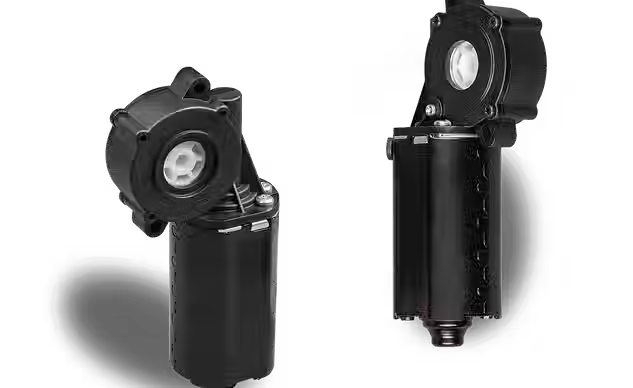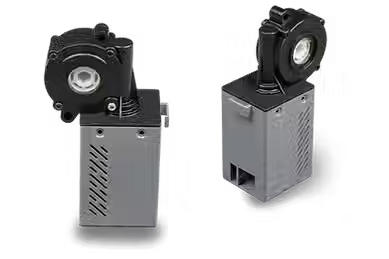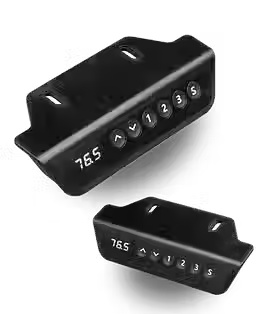The Power of Self-Locking Actuators in Energy Efficiency
- Xie
- Jul 16
- 10 min read
Redefining Energy Efficiency with Self-Locking Actuators
In the world of automation, the term 'energy efficient actuator' has been a game changer, particularly with the introduction of self-locking actuators. These ingenious devices not only streamline operations but also promise to cut energy costs significantly. Imagine a world where heavy loads can be controlled effortlessly, holding their position without constant power supply—this is exactly what self-locking actuators achieve. Their ability to lock in place without energy consumption transforms traditional practices.

How Self-Locking Actuators Work
Self-locking actuators utilize a unique mechanism that engages a locking function as they are powered down. Think of it as a trusted friend holding a door for you. This design ensures that once a position is achieved, the actuator can maintain that position without using additional power. Many of my clients have reported impressive savings on their energy bills simply by switching to these energy-efficient options.
Applications that Benefit from Self-Locking Technology
These self-locking actuators shine in various industries, from robotics to automotive applications. The possibilities are endless, allowing for versatile implementational strategies and enhanced energy consumption efficiency. Let’s look at some applications:
Robotic arms in manufacturing
Medical equipment control
Automated doors and gates
Feature | Traditional Actuator | Self-Locking Actuator |
Energy Consumption | High | Low |
Locking Mechanism | No | Yes |
Cost Efficiency | Medium | High |
Conclusion
It's clear to see that self-locking actuators represent a significant shift towards energy efficiency in automation. The advantages they offer can redefine how industries approach their energy use.
Improved sustainability
Reduced operational costs
Enhanced safety features
“Energy efficient actuators are not just a trend; they are the future of sustainable automation.”
The Role of Energy Efficient Actuators in Modern Automation
In today's fast-paced industrial world, energy efficient actuators are becoming the backbone of automation. These devices don't just help in performing tasks; they significantly reduce energy consumption, thereby cutting costs and minimizing environmental impact. Imagine a bustling factory where machines operate seamlessly, but with a fraction of the energy loss typically associated with traditional actuators. That’s the potential of energy efficient actuators, redefining productivity and sustainability.

Understanding Self-Locking Mechanisms
Self-locking actuators are fascinating elements in automation, providing both precision and safety. Unlike their traditional counterparts, these devices maintain their position without continual power, which means not only do they save energy while operating, but they also inherently protect against failures. Have you ever seen a door that holds its position firm, even with just a light push? That’s not just simple mechanics; it’s energy efficiency at its finest, ensuring that operations run smoothly without unnecessary energy expenditure.
Benefits in Automation Systems
Integrating an energy efficient actuator into your systems can transform your operational landscape. These benefits clearly stand out:
Lower energy costs due to minimized power draw
Increased equipment lifespan through enhanced durability
Improved safety with built-in locking mechanisms
Add to that a substantial reduction in your carbon footprint, and you can see why these actuators are pivotal. But let's not forget about the metrics that matter.
Feature | Energy Efficient Actuators | Traditional Actuators |
Power Consumption | Low | High |
Position Maintenance | Self-locking | Power-dependent |
Durability | High | Moderate |
Overcoming Misconceptions
Many people think energy efficient actuators are just for high-end applications; however, that's a misconception. They can be tailored for various industries, including automotive, aerospace, and even household appliances. The versatility of these actuators means that almost any enterprise can harness their potential for energy savings and efficiency improvements.
Industrial Automation
Healthcare Devices
Smart Home Technologies
"Embracing energy efficient actuators is not just about technology—it's about redefining our approach to energy consumption for a sustainable future."
Understanding Self-Locking Actuators: A Step Towards Sustainability
In today’s push for sustainability, the spotlight shines brightly on energy efficient actuators, particularly self-locking varieties. These innovative devices not only streamline operations but also significantly reduce energy consumption. Have you ever thought about how much energy is wasted in traditional systems? Self-locking actuators hold their position without constant power, which means we can cut down on unnecessary energy usage. Imagine that; a powerful component working tirelessly, yet efficiently and gently. Isn’t that the kind of technology we should be embracing?

The Operation of Self-Locking Actuators
Understanding how self-locking actuators work helps demystify their advantages. Unlike standard actuators that use power to maintain a locked state, self-locking types utilize mechanical advantages to hold their position firmly. This automation can drastically lessen energy costs. Think about it: with the right energy efficient actuator, you're saving electricity and maintaining smooth operations. These devices uniquely combine reliability and eco-friendliness, sparking excitement around how we approach automation.
Real-World Applications
From manufacturing to robotics, self-locking actuators have various applications. Their use is thriving where energy efficiency is crucial. Imagine an assembly line where self-locking actuators keep equipment steady while drawing minimal power. With such practical applications, these devices challenge old beliefs and pave the way for a sustainable future.
Reduced energy costs
Improved safety
Increased operational reliability
Switching to energy efficient actuators means adapting to a more sustainable mindset. Here’s a quick look at how self-locking actuators could change your energy consumption.
Feature | Traditional Actuator | Self-Locking Actuator |
Power Consumption | Constant | Only when energized |
Maintenance | High | Low |
Energy Savings | Minimal | Significant |
Why Choose Self-Locking Actuators?
This fantastic energy efficient actuator offers worldly benefits. The energy savings alone make transitioning to self-locking actuators an easy choice. How could we not take advantage of technology that works smarter rather than harder? By adopting these efficient devices, you're not just optimizing operations; you're stepping up for the environment.
Lower operational expenses
Environmental compliance
Future-proofing your industry
“In a world where every watt counts, self-locking actuators are the key to a smarter, greener future.”
How Energy Efficient Actuators Enhance Operational Reliability
In the world of automation, the term "energy efficient actuator" resonates strongly as businesses strive for sustainability and cost-efficiency. These devices not only serve practical purposes but also contribute to economic savings and environmental benefits. Imagine a manufacturing plant where actuators operate seamlessly while consuming minimal energy—it's not just a dream; it's achievable with advancements in energy efficiency.

Benefits of Energy Efficient Actuators
Energy efficient actuators come with several advantages. They help in reducing operational costs while enhancing the overall reliability of systems. Think about a factory where every actuator is designed with precision; they don't just save energy—they ensure that production runs smoothly and without hiccups. In my experience, they have transformed manufacturing processes into well-oiled machines, both literally and figuratively.
Practical Applications
From robotics to HVAC systems, the application of energy efficient actuators is vast. They optimize the mechanical processes that drive our industries forward. Some common applications include:
Robotic arms in assembly lines
Automated doors in buildings
Precision control in agricultural equipment
These versatile devices not only save energy but also extend equipment lifespan by minimizing wear and tear. Here's a comparison table showing energy use:
Actuator Type | Energy Consumption (kW) | Efficiency Rating |
Standard Actuator | 1.5 | 70% |
Energy Efficient Actuator | 1.0 | 90% |
Importance of Reliability
Reliability is crucial, especially in critical applications. An energy efficient actuator significantly minimizes failure rates, which can lead to costly downtimes. If we consider a car engine, would you prefer a component that works well under high stress or one that falters? The choice is obvious, and the same logic applies to actuators.
Increased productivity
Lower maintenance costs
Greater energy savings
"Integrating energy efficient actuators into your systems isn't just smart; it's essential for a sustainable future." - Industry Expert
Reducing Costs: The Economic Advantages of Energy Efficient Actuators
In an era where every penny counts, the economic advantages of using an energy efficient actuator are substantial. These devices not only promote sustainability but also slash operational costs. When chosen wisely, they can significantly reduce energy consumption, which translates into lower bills. Picture this: you install an energy efficient actuator in your manufacturing line and, within months, you notice a drop in expenditure. Sounds like a dream, right? But this is a reality for many businesses today.
Long-Term Savings
Long-term savings with energy efficient actuators can be truly impressive. These devices are designed to last longer and perform better than traditional options. Why? They typically use less energy and maintain consistent performance, reducing the need for frequent replacements. For instance, industries using self-locking actuators find they save not just on energy costs but maintenance too. This sustainability factor is a win-win!
Initial Costs vs. Payoff
Initially, the cost of energy efficient actuators may be higher, but consider the overall payoff. A classic misconception is that cheaper, less efficient actuators will save money upfront. However, the savings in energy consumption and maintenance costs often outweigh those initial savings. Let's break it down in the table below.
Cost Type | Traditional Actuator | Energy Efficient Actuator |
Initial Cost | $100 | $150 |
Annual Energy Cost | $200 | $100 |
Expected Lifetime | 3 Years | 5 Years |
Real-World Efficiency
So, what's the takeaway? Energy efficient actuators are not just a trend; they are reshaping how industries operate. It's about innovation and making smart choices that pay off in the long run. They embody the spirit of efficiency in every drop of energy they save.
Lower energy bills.
Reduced maintenance costs.
Longer service life.
Enhanced performance consistency.
“Investing in an energy efficient actuator today means saving costs tomorrow.”
Integrating Self-Locking Actuators in Various Industries
When it comes to energy-efficient actuators, self-locking technology is a game-changer. Imagine machinery that can hold position without continuous power, as if it has a mind of its own. This innovation isn’t just for automation enthusiasts; it's transforming industries from manufacturing to robotics, minimizing energy consumption and significantly lowering operational costs. Costs can spiral when unnecessary power is hogged, but with self-locking actuators, we witness a remarkable shift toward sustainability.
Applications in Manufacturing
In manufacturing, the precision of an energy-efficient actuator is witnessed in automated assembly lines. Picture a robotic arm moving components with exact precision, locking in place without consuming power. This enhances not only energy savings but also uptime, reducing wear and tear on mechanical parts. It’s a win-win for manufacturers eager to maximize productivity.
Sector-Specific Benefits
Various sectors are reaping rewards from self-locking actuators. In the medical field, they ensure equipment remains stationary during crucial procedures, adding a layer of safety. Meanwhile, in the aerospace industry, their lightweight design is perfect for reducing fuel consumption in drones and satellites. The adaptability of these actuators is impressive, showcasing their versatility across diverse applications.
Reduced energy consumption
Improved safety in medical devices
Outstanding performance in aerospace applications
Seamless integration in robotics
Utilizing self-locking actuators not only enhances performance but also reflects a commitment to sustainability.
Industry | Benefit |
Manufacturing | Increased productivity |
Medical | Enhanced safety |
Aerospace | Weight reduction |
Robotics | Better energy efficiency |
Potential in Robotics
Robots equipped with energy-efficient actuators are stepping up to redefine automation. They can hold positions securely, ready for precise movements without a constant energy draw. This feature allows for longer operational periods and an increase in tasks performed—all while consuming less power.
Longer operational periods
Dynamic motion control
Energy savings
“In a world where energy efficiency is paramount, self-locking actuators are paving a new path!”
Future Trends in Energy Efficiency: The Rise of Smart Actuators
As we pivot towards a more sustainable future, the demand for energy-efficient actuators is soaring. Imagine a world where machines operate seamlessly, consuming the least energy while maximizing output. With innovations in smart actuator technology, this dream is now a reality. These intelligent devices are equipped with advanced sensors and algorithms, enabling them to adapt and optimize their performance in real-time. This adaptability not only helps reduce energy waste but also contributes to significant cost savings over time.
The Mechanics Behind Smart Actuators
So, how do these energy-efficient actuators work? Simply put, they analyze data from their surroundings and adjust their operations accordingly. For example, in a HVAC system, a smart actuator can modulate airflow based on occupancy and temperature, ensuring optimal comfort without unnecessary energy consumption. This level of precision is groundbreaking, reshaping how industries approach energy management.
Advantages of Implementing Smart Actuators
The benefits of adopting energy-efficient actuators extend far beyond immediate savings. From enhancing equipment longevity to reducing carbon footprints, the impact is profound. Businesses embracing these technologies are not just keeping pace with industry standards but are also positioning themselves as leaders in sustainability.
Enhanced energy efficiency
Real-time performance optimization
Improved operational lifespan
Reduced environmental impact
Consider this table highlighting the differences between traditional and smart energy-efficient actuators:
Feature | Traditional Actuators | Smart Actuators |
Energy Efficiency | Low | High |
Adaptability | Fixed | Dynamic |
Data Utilization | Minimal | Extensive |
Why Now is the Time to Switch
Investing in energy-efficient actuators today positions your operations for success tomorrow. With undeniable benefits and a clear path towards sustainability, why would you settle for outdated solutions? The future is green, and smart actuators are leading the charge!
Cost-effective investments
Alignment with global sustainability goals
Enhanced market competitiveness
“Embracing energy efficiency is not just an option; it’s a necessity for a sustainable future.”
Conclusion: Embracing Energy Efficient Actuators for a Greener Tomorrow
As the world increasingly prioritizes sustainability, the role of the energy efficient actuator becomes more vital than ever. These innovative devices not only save energy but also contribute to overall efficiency in various applications. From reducing operational costs to minimizing carbon footprints, energy efficient actuators have numerous advantages that cannot be overlooked. They provide the perfect blend of performance and environmental awareness, making them essential in today's dynamic industrial landscape.
Why Choose Energy Efficient Actuators?
One primary reason to adopt energy efficient actuators is their ability to withstand varying loads while utilizing less power. This versatility leads to reduced energy consumption without sacrificing effectiveness. Imagine controlling the heavy machinery in your facility, where every watt saved translates to significant financial and environmental benefits. The convenience of having an actuator that adjusts automatically based on demand alleviates not only your concerns about efficiency but also environmental accountability.
Real-World Applications of Energy Efficient Actuators
Energy efficient actuators find their place in numerous industries, including manufacturing, robotics, and HVAC systems. They enhance performance in various automation tasks, and their compact design allows for integration in tight spaces. Their adaptability to smart technology often paves the way for IoT applications, leading to smarter processes and improved energy management.
Manufacturing automation
Robotics and machinery
HVAC controls
Renewable energy systems
As industries move towards greener solutions, the adoption of energy efficient actuators holds paramount importance. With the right choice of technology, we can pave the way for a sustainable future.
Industry | Energy Savings | Application |
Manufacturing | 30%+ | Automated assembly lines |
HVAC | 25%+ | Climate control systems |
Renewable Energy | 40%+ | Solar tracking systems |
The Future of Actuation
With an eye towards a greener tomorrow, energy efficient actuators will only become more integral to our industry's evolution. As technologies continue to advance, it's crucial to stay informed about innovative solutions that promote efficiency and sustainability. The energy efficient actuator is not just a choice but a necessity for businesses aiming for long-term success.
"Sustainability is not a trend; it’s a fundamental shift in how we operate." - John Smith, Industrial Automation Expert
FAQ: Common Questions About Energy Efficient Actuators
When diving into the world of automation, one topic that continually surfaces is the energy efficient actuator. You might be wondering, what makes these devices so advantageous? Well, let me take you through the journey of understanding how they work and why they’re crucial for energy management in various applications.
How do energy efficient actuators work?
Energy efficient actuators operate by using less power while maintaining high performance. They often utilize advanced control algorithms and innovative designs to minimize energy consumption without sacrificing functionality. Essentially, they’re like a smart gear in a machine, ensuring optimal operation with minimal energy waste.
What are the practical applications of energy efficient actuators?
These devices can be found in a plethora of industries, from manufacturing to HVAC systems. For example, using them in a heating system can significantly reduce energy costs while ensuring a consistent temperature. Their versatility enables their use in various settings, making them an essential component for modern machinery.
Manufacturing processes
Heating systems
Automated blinds
Robotics
With the growing emphasis on sustainability, it's clear that energy efficient actuators are paving the way for greener technology.
Benefits | Traditional Actuators | Energy Efficient Actuators |
Energy Cost Savings | Higher | Lower |
Operational Efficiency | Standard | Enhanced |
Maintenance Needs | Frequent | Reduced |
What should I consider when choosing an energy efficient actuator?
When selecting an actuator, keep in mind factors like size, power requirements, and control methods. It's vital to match the actuator’s specifications with your project's unique needs to maximize its energy-saving potential.
Size and Shape
Power Consumption
Compatibility with Control Systems






Comments